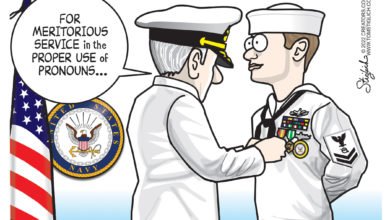Medal of Honor Monday: Navy Chief Aviation Pilot Francis E. Ormsbee Jr.
While naval aviation was still in its infancy, Navy Chief Aviation Pilot Francis Edward Ormsbee Jr. was ready and willing to take to the skies for his country. Before he officially became a pilot, however, he helped rescue a fellow sailor from a plane crash. His heroics earned him the Medal of Honor.
Ormsbee was born on April 30, 1892, in Providence, Rhode Island, to parents Francis Sr. and Sarah Ormsbee. He had at least one sibling – a brother named Harry – but otherwise, little else has been published about his childhood.
Ormsbee joined the Navy in 1917, the same year the U.S. entered World War I. Naval aviation was just getting off the ground, so to speak, and Ormsbee was interested in becoming a pilot. So, after basic training, he was sent to Naval Air Station Pensacola, Florida, where flight training activities were operating at a fever pitch in preparation for fighting overseas.
By fall of 1918, Ormsbee was a chief machinist’s mate who was taking part in flight training. On Sept. 25, 1918, he was in a seaplane above Pensacola Bay with Ensign J.A. Jova when they saw another aircraft go into a tailspin and crash about three-quarters of a mile away. That aircraft was piloted by Ensign Thomas McCarthy and Petty Officer 3rd Class Paul Parsons.
Jova and Ormsbee quickly hopped into action. Jova landed his aircraft on the water nearby and taxied to the wreckage. Ormsbee then dove overboard to scour for survivors in the aircraft, which was underwater except for its wing tips.
Ormsbee succeeded in pulling Parsons far enough to the surface that his head was out of the water. He was able to hold Parsons in that position until a speedboat arrived to extricate him. Ormsbee then went back into the aircraft repeatedly, injuring his hands in the process, to try to dislodge McCarthy. Unfortunately, Ormsbee wasn’t able to save him.
Ormsbee was initially awarded the Navy Cross, but that was upgraded to the Medal of Honor on Dec. 7, 1918, according to an article in the Atlanta Journal. He eventually learned to fly, receiving his wings of gold as the Navy’s 25th naval aviation pilot — a designation that, at the time, was given to enlisted men who completed the flight training program.
Ormsbee left the Navy in 1929, but not aviation. The now-accomplished flier became a pilot for Pan American Airways on its inaugural mail routes. According to the U.S. Navy Memorial website, Ormsbee was transferred from Miami routes to the Panama Canal Zone at some point to help alleviate a chronic shortage of experienced pilots.
Naval historians said Ormsbee helped establish Pan Am’s routes in Central and South America, including accompanying famed aviator Charles Lindbergh in his survey of those areas. Ormsbee even flew the world’s longest airmail route at the time, which was from Miami to Santiago, Chile.
In 1935, Ormsbee went to work for the Department of Commerce as an air navigation inspector.
Sadly, he died in a plane crash about a year later, on Oct. 24, 1936. Official reports of the crash stated that he was flying from Washington, D.C., to Fort Worth, Texas, when the weather took a turn for the worse. He tried to land in Ardmore, Oklahoma, to wait out the storm, but he crashed into a mountain north of the town.
Ormsbee was buried in St. Francis Cemetery in Pawtucket, Rhode Island.
This article is part of a weekly series called “Medal of Honor Monday,” in which we highlight one of the more than 3,500 Medal of Honor recipients who have earned the U.S. military’s highest medal for valor.
Source: Department of Defense
Content created by Conservative Daily News is available for re-publication without charge under the Creative Commons license. Visit our syndication page for details.




